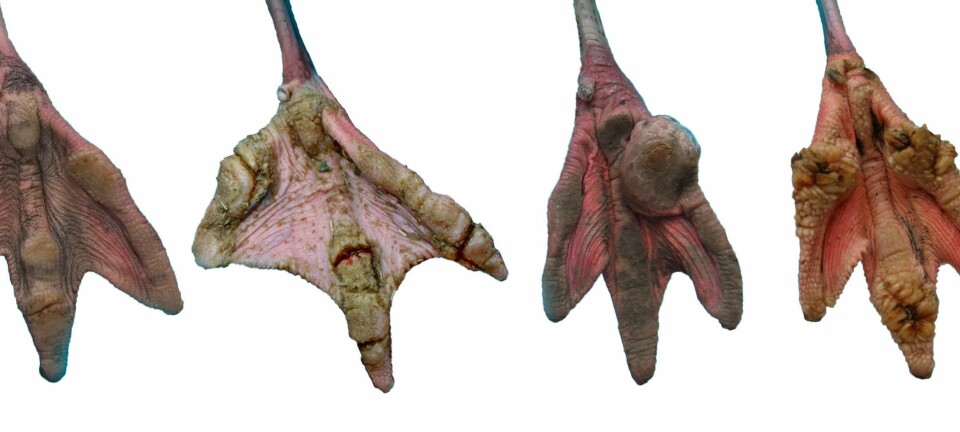
Bats have the fastest muscles of all mammals
Researchers have found extremely fast muscles in bats. They are the fastest muscles ever found in mammals.
When a bat hunts its prey, it emits sounds that are sent back as echoes when the sounds hit an object. In this way the bat forms an acoustic image of its surroundings that it can use for navigation. The ability to hunt insects with the aid of sounds has made the bat a formidable rodent in the night sky.
Researchers at the University of Southern Denmark have now found the reason why the bat is such a good hunter. Extremely fast muscles in the bat’s larynx can contract 200 times a second, and it emits a sound every time. These muscles are the fastest muscles ever found in mammals.
This finding was recently published in the journal Science.
“The bat’s super-quick muscles are 100 times faster than the muscles that humans use when blinking,” says Assistant Professor Coen Elemans of the Institute of Biology at the University of Southern Denmark, who led the research. “These muscles are still 20 times slower than the muscles in the bat’s larynx.”
Bats aren’t limited by their ears
The new finding means that we now have a clear picture of how many sounds (calls) a bat can emit per second, and how many it can hear per second.
Previously, researchers believed that the frequency of a bat’s call was limited by the ability of the bat’s ears to hear the many echoes produced every second. But the researchers reject that now, as bats can actually hear 400 echoes a second. The limiting factor is the number of sounds that the bat’s larynx can emit.
In a laboratory, the researchers placed an insect on a line in the middle of a room. They then released a bat into the room and recorded its call sounds using numerous microphones placed throughout the room. This enabled the researchers to see where the bat was in the room at all times, while also calculating the time it took for the sound to travel from the bat to the insect and back again.
On the basis of the microphone study, the researchers could determine that bats can hear 400 echoes a second.
When the researchers were to find out how quick the bat’s muscles are in reality, they activated the individual muscles using electric impulses. The muscles had been removed from the bats so they could be tested under controlled conditions. It became clear here that the muscle was ‘only’ able to contract 200 times a second, which is nevertheless the fastest ever seen in mammals.
Not the only animals with super-quick muscles
Although this is the first time that super-quick muscles have been found in a mammal, similar muscles have previously been found in other parts of the animal kingdom.
Rattlesnakes have super-quick muscles in their tails and they use them to make their rattling sounds to frighten and warn other animals. Toadfish also have very quick muscles, which they use when they make their calls, as do pigeons and songbirds.
“When we find extremely quick muscles in several different animal species that are only distantly related, we must ask ourselves: have super-quick muscles been developed individually several times? Or were these muscles developed many millions of years ago and subsequently transmitted in several different branches of the animal kingdom?” muses Elemans.
Super-quick muscles made bats the master of insects
It was the development of super-quick muscles that has made the bat a successful species when the first bats conquered the night sky some 50 million years ago.
At that time the air was filled with insects and nothing ate them. The bats found a niche in the eco-system then, and this resulted in an explosion in the number of bats.
“Until now, people have thought that the success of the bats was the result of two factors: their ability to fly and their ability to emit sounds and hear the echoes,” says Coen Elemans. “But here we would like to add that it has been necessary for bats to develop super-quick muscles for them to be able to use the echoes to catch their prey.”
Elemans adds: “Many other animals use echoes to orientate themselves in their surroundings, but that is a slow form of echo that can’t be used for catching prey. The super-quick muscles in the bat’s larynx are the reason why bats have been so successful as a species.”
According to Elemans, we can learn a lot from bats’ super-quick muscles. Bats’ muscles can be used for e.g. expanding our understanding of the muscular physiology in humans.
Read the article in Danish at videnskab.dk
Translated by: Michael de Laine












